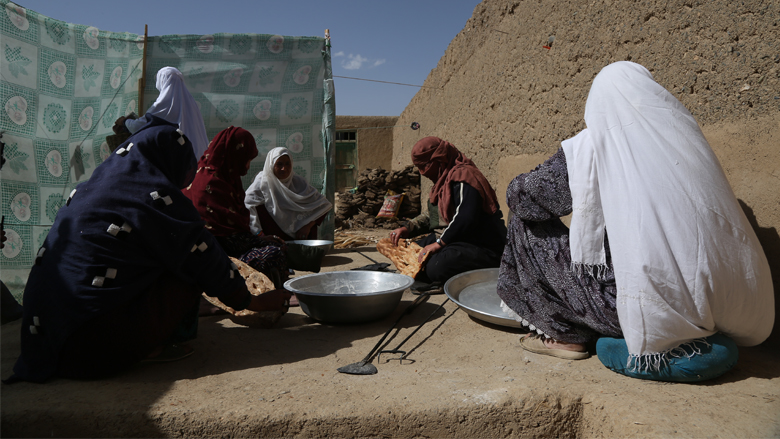--------------------------------------------------------------------------------------------------------------------------
Continued international aid, including through the Afghanistan Reconstruction Trust Fund (ARTF), is vital to create better lives for millions of Afghans and sustain development gains. The #ProtectTheGains series highlights ARTF projects that have made a real difference toward achieving a more prosperous, inclusive, and peaceful Afghanistan.
----------------------------------------------------------------------------------------------------------------------------
BAMYAN CITY, Bamyan Province – Nestled among a sea of traditional homes built of mud and straw is Haider Abad’s only beauty salon. Inside the unassuming mud brick house, a thin curtain reveals a large room complete with the latest beauty necessities—hair removal threading, cutting and styling scissors, eyeshadow palates, blush and foundation compacts—neatly stacked on a converted desk that serves as a vanity.
The co-owners of the salon in Haider Abad neighborhood in the provincial capital, Bamyan are budding entrepreneurs. They had seized a business opportunity and are making a success of their beauty salon, which is also teaching them valuable skills in money management. “In a month, we earn between 2,000–5,000 afghanis (about $26–$66)*, sometimes less,” says one of the owners. “When we earn more, we save the rest in case we have problems in the future.”
This salon did not exist two years ago, but thanks to a micro-loan of 5,000 afghanis from the Haider Abad Village Savings and Loan Association (VSLA), two enterprising women created their business, providing a new service to the community.
Haider Abad VSLA was one of 524 VSLAs that were established in five provinces (Balkh, Bamyan, Herat, Nangarhar, and Parwan) with support from the Afghanistan Rural Enterprise Development Project (AREDP).
AREDP, which closed in March 2018, was implemented by the Ministry of Rural Rehabilitation and Development (MRRD). The project worked to enhance economic mobilization and activities by organizing the rural poor into Savings Groups (SGs), VSLAs, and Enterprise Groups. SGs were federated into VSLAs, which could provide larger loans to members.
AREDP was supported by the Afghanistan Reconstruction Trust Fund (ARTF), managed by the World Bank on behalf of 34 donors, and the International Development Association (IDA), the World Bank Group’s fund for the poorest countries.
Efforts to increase the social and economic empowerment of poor, rural women are continuing under AREDP’s successor, the Women's Economic Empowerment Rural Development Project (WEERDP), which is working to increase women’s participation in community-level institutions. The MRRD project is also supported by ARTF and IDA.

